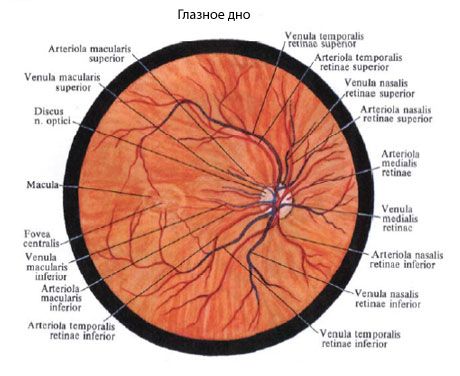Medical expert of the article
New publications
Retinal vessels
Last reviewed: 04.07.2025

All iLive content is medically reviewed or fact checked to ensure as much factual accuracy as possible.
We have strict sourcing guidelines and only link to reputable media sites, academic research institutions and, whenever possible, medically peer reviewed studies. Note that the numbers in parentheses ([1], [2], etc.) are clickable links to these studies.
If you feel that any of our content is inaccurate, out-of-date, or otherwise questionable, please select it and press Ctrl + Enter.
Entering the eye at the center of the optic nerve, the central retinal artery and accompanying vein branch into four, supplying blood to four quadrants of the retina: the superior and inferior nasal and the superior and inferior temporal. The retinal vessels before their first branching are called first-order vessels, from the first to the second branching - third-order vessels. All these vessels are clearly visible with ophthalmoscopy. Smaller vessels (arterioles, venules and true capillaries) are not visible even with modern ophthalmoscopic examination methods. The terminal retinal capillaries consist of a single layer of epithelium and do not have any membranes.

The retinal capillaries extend into the inner layers and terminate in the bipolar cell layer at the border with the first neuron (at the periphery). Thus, the retina receives blood supply from two sources: the inner layer up to the first neuron - from the central retinal artery system, and the first neuron - from the choroid.
The processes of metabolism between the blood-terminal capillaries and the cellular elements of the retina occur through the intermediate medium, which surrounds each cell of the organ (including the cells of the retina). Substances necessary for the life and function of cells enter this intermediate medium from the terminal capillaries. The products of their vital activity enter this intermediate medium from the cells. When entering into a reaction, some of the substances are destroyed, but in the intermediate medium there always remains a sufficient and continuously replenished supply of the necessary ingredients for metabolism.
Each cell, each fiber and each capillary of the retina is surrounded by the interstitial substance. It is the internal environment in which all the necessary components are transported from the blood of the terminal capillaries to the nerve cells.
Thus, the blood supply of all layers of the retina is carried out by one arterial system - the central artery of the retina. Its terminal capillaries do not extend to the first neuron, but the blood circulation is united for all nerve cells and fibers by means of the interstitial colloidal substance. The function of the choroid is limited to supplying only one layer of the pigment epithelium.
 [ 1 ], [ 2 ], [ 3 ], [ 4 ], [ 5 ], [ 6 ], [ 7 ], [ 8 ], [ 9 ], [ 10 ], [ 11 ], [ 12 ]
[ 1 ], [ 2 ], [ 3 ], [ 4 ], [ 5 ], [ 6 ], [ 7 ], [ 8 ], [ 9 ], [ 10 ], [ 11 ], [ 12 ]

